The Dime Coin - Definition, Examples, Quiz, FAQ, Trivia
Learn about the 10-cent coin with fun facts, examples, and practice activities
What is a Dime?
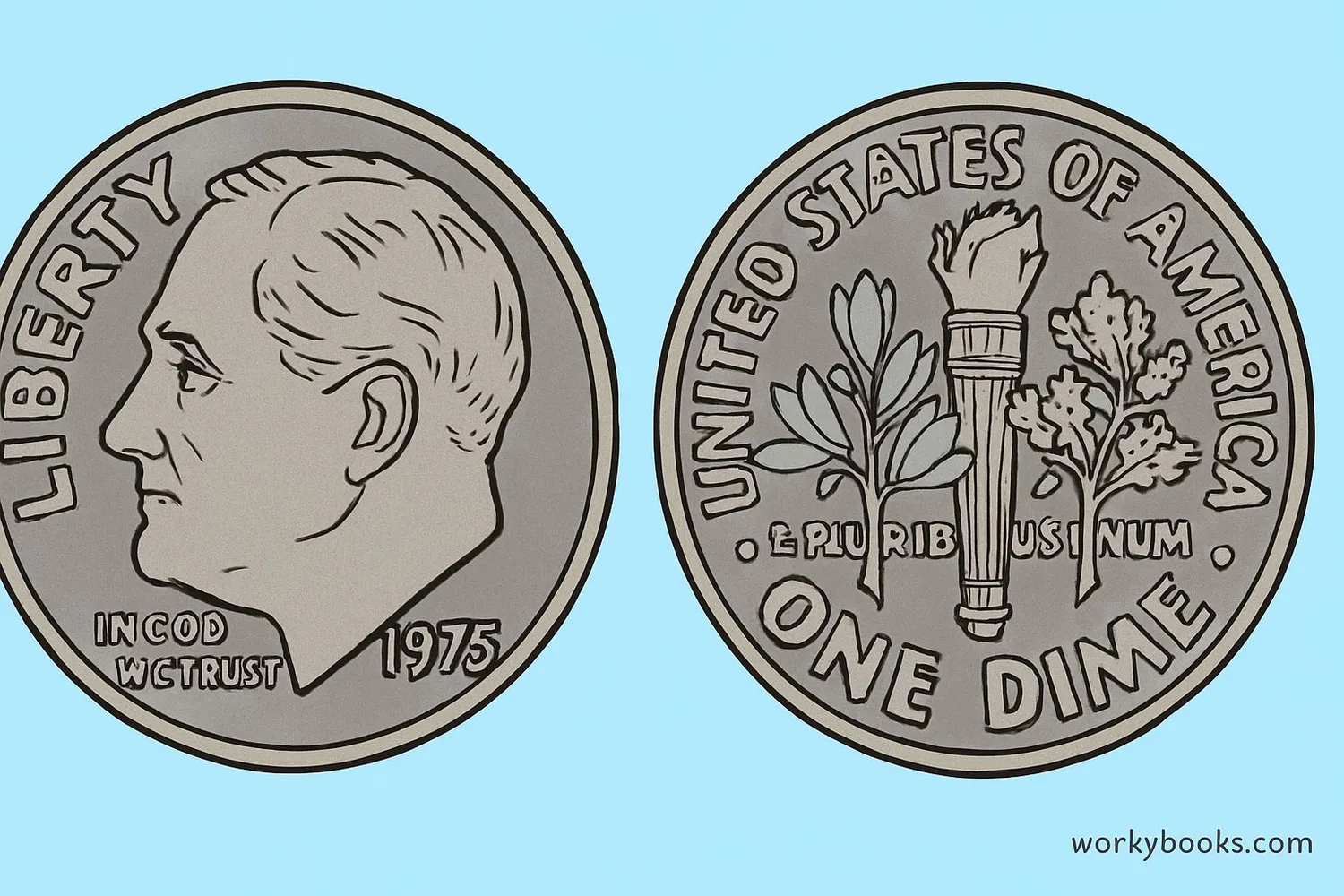
A dime is a coin used in the United States that is worth ten cents. That means ten dimes make one dollar! The word "dime" comes from the French word "dîme," meaning "tithe" or "tenth part," which makes sense because a dime is one-tenth of a dollar.
Dimes are the smallest and thinnest of all US coins. They have a smooth edge with ridges called "reeding" around the side. Even though dimes are small, they're very important in our money system!
Today's dime has President Franklin D. Roosevelt on the front (obverse) and a torch with an olive branch and oak branch on the back (reverse). This design has been used since 1946.
Key Concept
1 dime = 10 cents = 1/10 of a dollar
Facts About the Dime
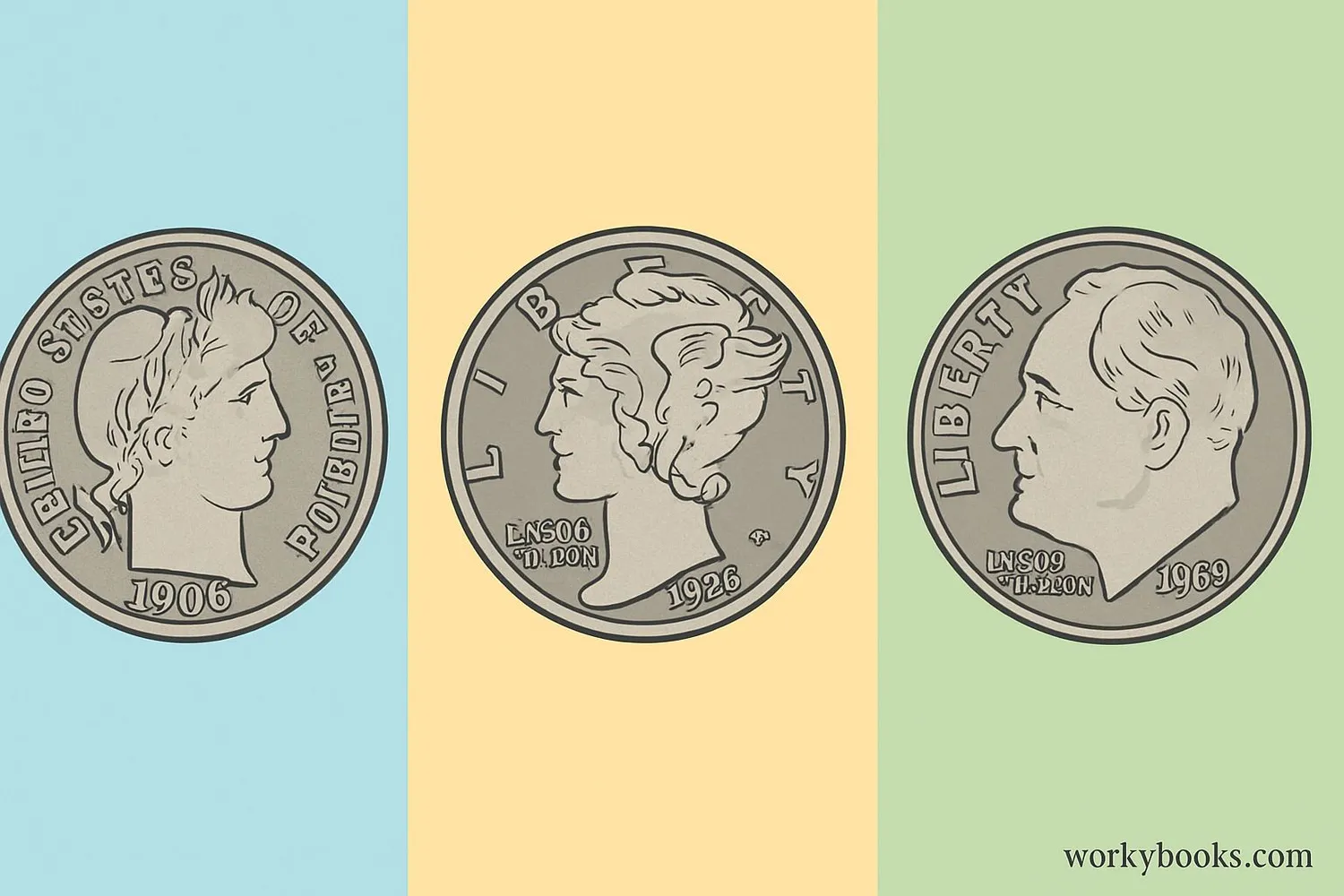
Let's explore some interesting facts about dimes:
1. Material: Today's dimes are made of a mixture of metals: 91.67% copper and 8.33% nickel. This makes them look silver but they're mostly copper inside!
2. Size: A dime is 17.91 mm in diameter (about 0.7 inches) and only 1.35 mm thick. That's thinner than a pencil!
3. Weight: A dime weighs 2.268 grams. You'd need about 200 dimes to weigh one pound.
4. History: The first dimes were minted in 1796. They featured a woman representing Liberty. The Roosevelt dime was introduced in 1946, just months after President Roosevelt died.
5. Special dimes: Some dimes are worth much more than 10 cents to collectors! The 1916-D Mercury dime and the 1894-S Barber dime are especially rare and valuable.
Dime
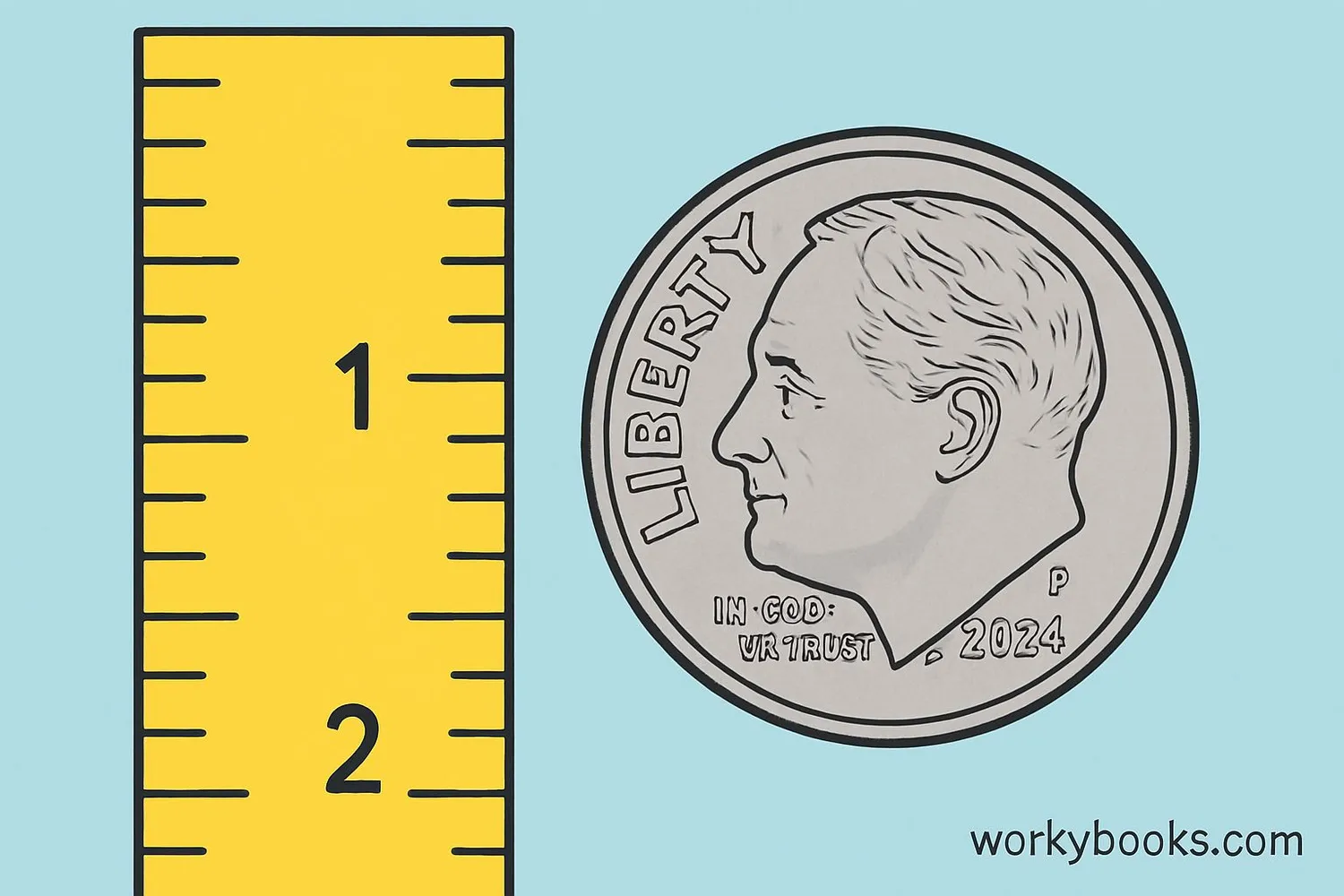
Value: 10 cents
Size: 17.9mm diameter
Color: Silver
Penny
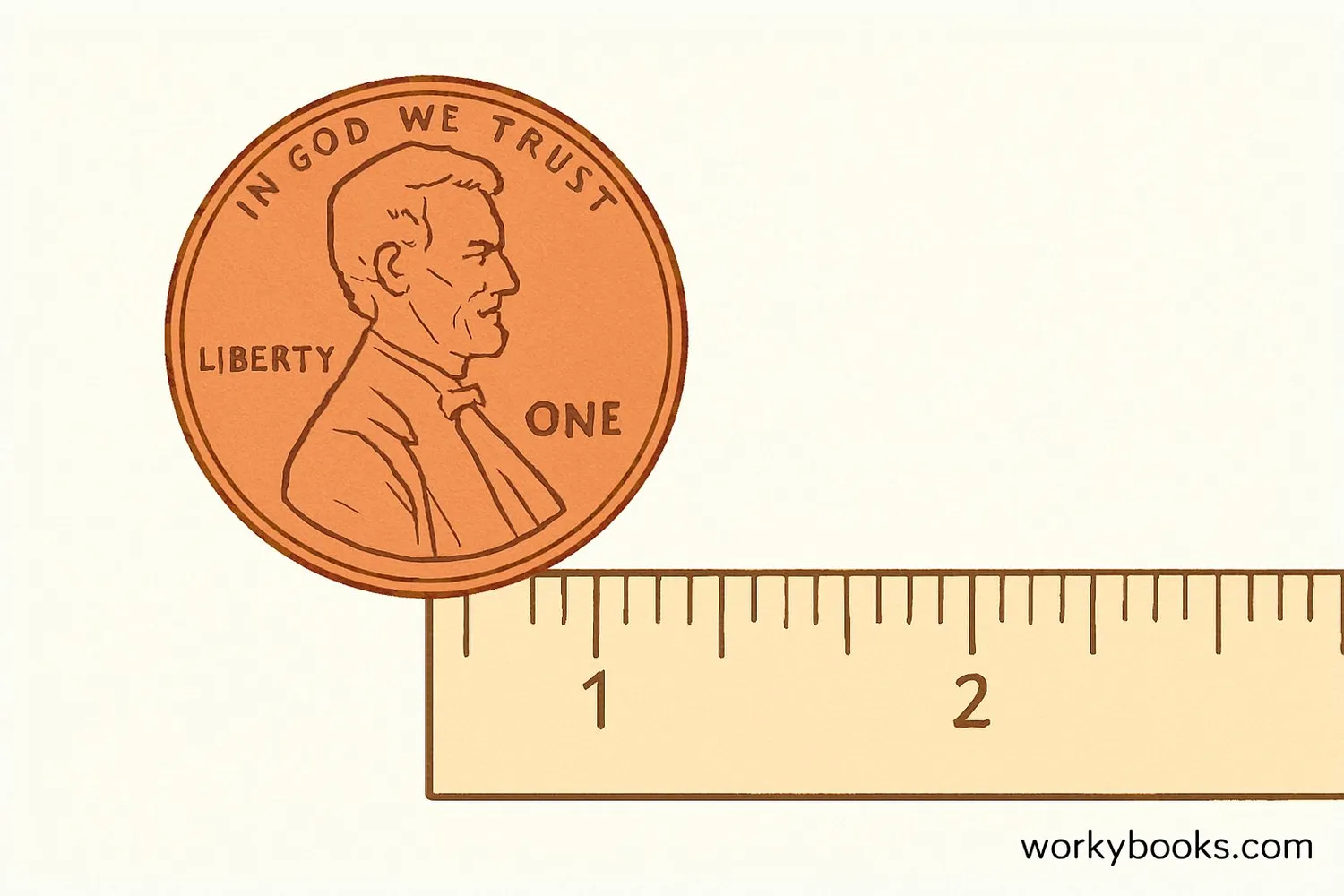
Value: 1 cent
Size: 19.05mm diameter
Color: Copper
Dime vs Penny
Even though a penny is larger than a dime, a dime is worth ten times more! Always check the value, not the size.
Using Dimes in Everyday Life
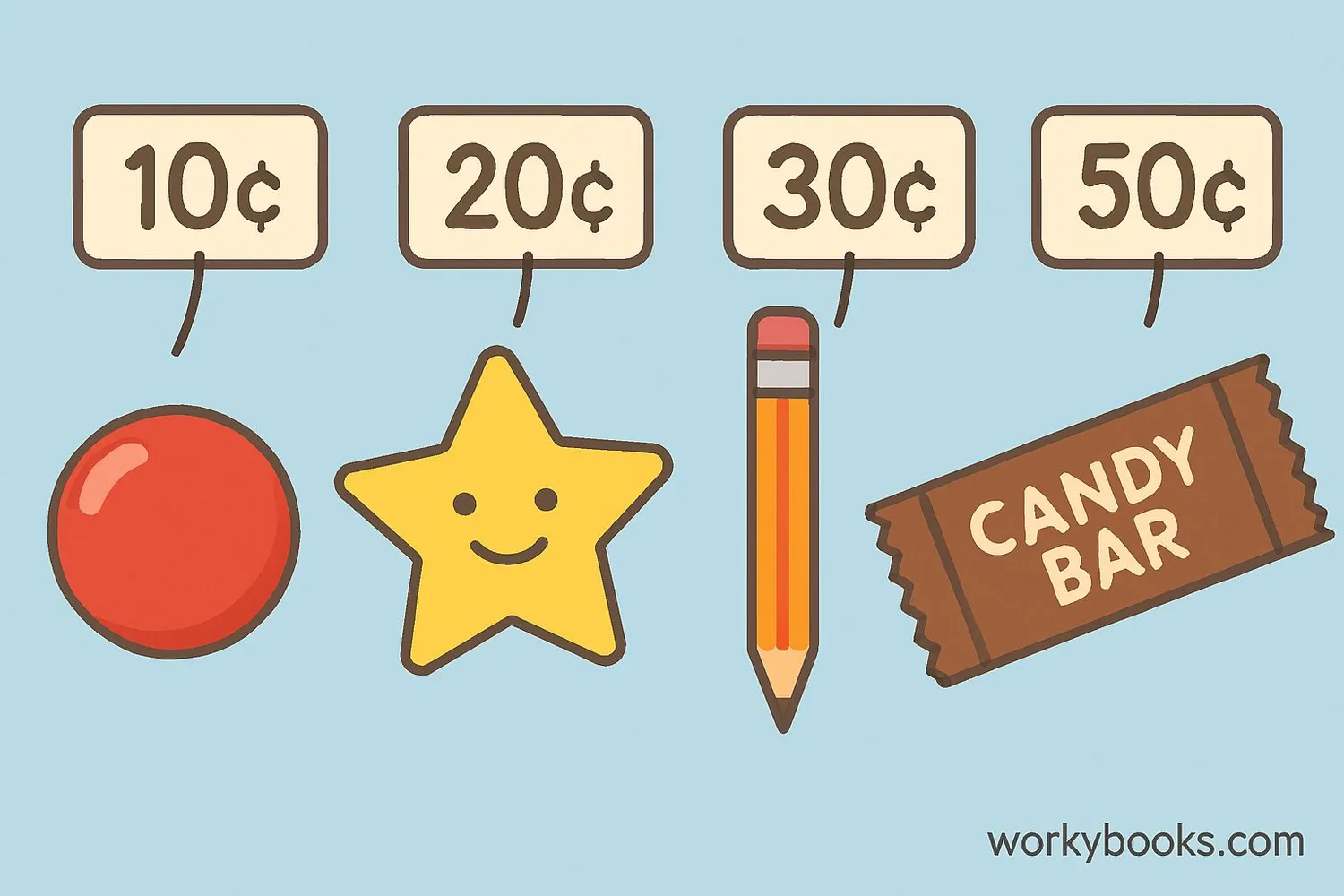
Dimes are very useful for making exact amounts of money. Let's see how we can use dimes:
Counting with dimes: Since each dime is worth 10 cents, we can count by tens when using dimes:
1 dime = 10 cents
2 dimes = 20 cents
3 dimes = 30 cents
5 dimes = 50 cents (half dollar)
10 dimes = 100 cents = 1 dollar
Making amounts: You can combine dimes with other coins to make specific amounts. For example:
25 cents = 2 dimes and 1 nickel
37 cents = 3 dimes, 1 nickel, and 2 pennies
65 cents = 6 dimes and 1 nickel
Real-world examples:
- A piece of gum might cost 10 cents (1 dime)
- A small sticker might cost 20 cents (2 dimes)
- A pencil might cost 30 cents (3 dimes)
- An apple might cost 50 cents (5 dimes)
Money Tip
When counting change, start with the highest value coins first. Count dimes before nickels and pennies!
Dime Knowledge Quiz
Test what you've learned about dimes with this 5-question quiz. Choose the best answer for each question.
Frequently Asked Questions
Here are answers to common questions about dimes:
Money Trivia
Discover interesting facts about US coins and money:
First Dime Design
The first dimes minted in 1796 featured a portrait of Liberty with flowing hair. These coins were made of 89.24% silver and 10.76% copper, and only about 15,000 were made!
Dime Production
The US Mint produces about 2.3 billion dimes each year. If stacked, these dimes would reach over 200 miles high - that's high enough to reach the International Space Station!
Space Dime
A special dime was flown to the moon on Apollo 11 in 1969. Astronaut Neil Armstrong carried this dime with him during the first moon landing as a good luck charm.
"A Dime a Dozen"
The expression "a dime a dozen" means something is very common and not valuable. It comes from the 1800s when eggs or apples might actually be sold for a dime per dozen!





